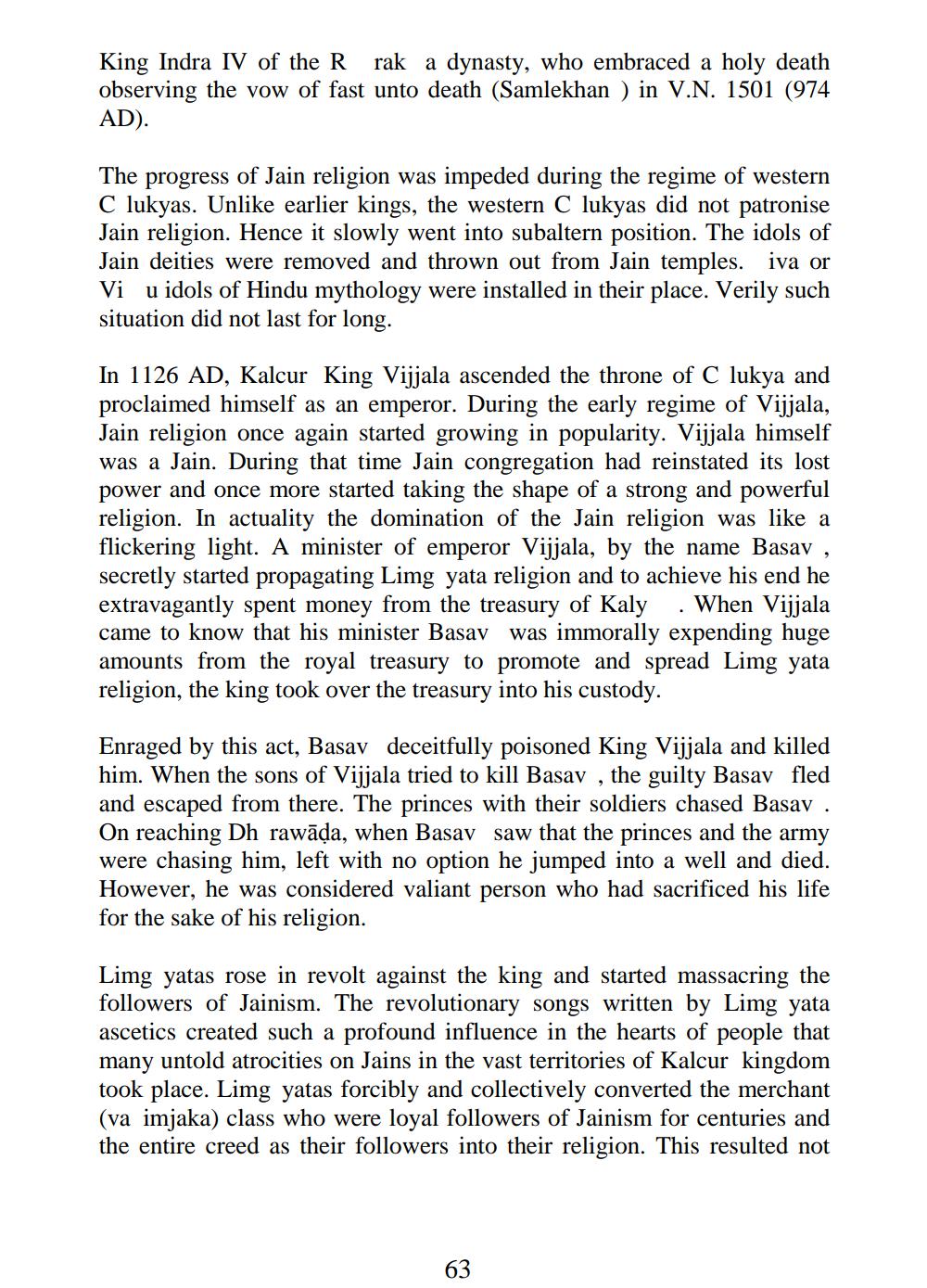________________
King Indra IV of the R rak a dynasty, who embraced a holy death observing the vow of fast unto death (Samlekhan) in V.N. 1501 (974 AD).
The progress of Jain religion was impeded during the regime of western C lukyas. Unlike earlier kings, the western C lukyas did not patronise Jain religion. Hence it slowly went into subaltern position. The idols of Jain deities were removed and thrown out from Jain temples. iva or Vi u idols of Hindu mythology were installed in their place. Verily such situation did not last for long.
In 1126 AD, Kalcur King Vijjala ascended the throne of C lukya and proclaimed himself as an emperor. During the early regime of Vijjala, Jain religion once again started growing in popularity. Vijjala himself was a Jain. During that time Jain congregation had reinstated its lost power and once more started taking the shape of a strong and powerful religion. In actuality the domination of the Jain religion was like a flickering light. A minister of emperor Vijjala, by the name Basav secretly started propagating Limg yata religion and to achieve his end he extravagantly spent money from the treasury of Kaly When Vijjala came to know that his minister Basav was immorally expending huge amounts from the royal treasury to promote and spread Limg yata religion, the king took over the treasury into his custody.
Enraged by this act, Basav deceitfully poisoned King Vijjala and killed him. When the sons of Vijjala tried to kill Basav, the guilty Basav fled and escaped from there. The princes with their soldiers chased Basav. On reaching Dh rawāḍa, when Basav saw that the princes and the army were chasing him, left with no option he jumped into a well and died. However, he was considered valiant person who had sacrificed his life for the sake of his religion.
Limg yatas rose in revolt against the king and started massacring the followers of Jainism. The revolutionary songs written by Limg yata ascetics created such a profound influence in the hearts of people that many untold atrocities on Jains in the vast territories of Kalcur kingdom took place. Limg yatas forcibly and collectively converted the merchant (va imjaka) class who were loyal followers of Jainism for centuries and the entire creed as their followers into their religion. This resulted not
63




